The Lost Caverns of Ixalan - Cultural and Historical References
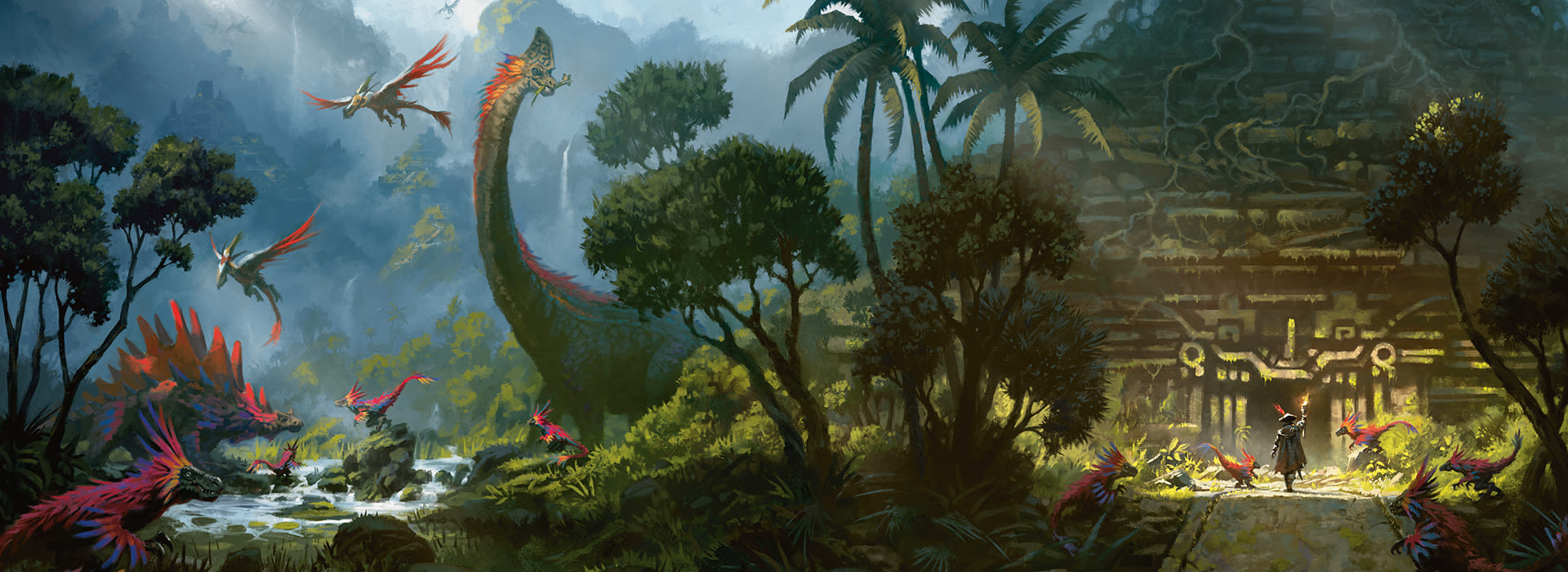
Dinosaur Temple Marketing Art | by Bryan Sola
The Lost Caverns of Ixalan has been, in my opinion, the richest set Magic has had in years. You can feel the love and dedication the team put into being as close as possible to the source material: Mesoamerican and Inca civilizations. As a Latina, it's been relatively easy to spot most of the references, which has been a huge extra to the usual Magic experience, and I would love if people from other parts of the world could enjoy this new set as much as I do. That's why I'm happy to share with you the references me and my community have been able to identify during the preview season.
This is a longform guide that you can use to understand the cards and springboard to research on your own. I would also like to highlight that I'm not by any means a professional anthropologist nor a historian, so I expect to miss a few references here and there. If you're looking for something specific, please click on the associated links in the table of contents below.
Table of Contents
- Affiliations
- Animals
- Architecture and Language
- Art and Statuary
- Catholicism
- Culture
- Nature
- Objects
- People and Deities of Ixalan
- Set Symbol
- The Gods of Ixalan
Some Initial Remarks
- You may know Mexicas as Aztecs. According to the legend, Huitzilopochtli, the God of War, ordered the Aztecs to migrate to a promised land in which they would prosper. They had to found the new city wherever they saw an eagle on top of a nopal cactus eating a snake (that's the origin of the Mexican coat of arms). Once they achieved this goal, they started calling themselves Mexicas. The most important archeological findings (and the ones used as references for Ixalan) come from the time when they called themselves Mexicas, and I will address them that way in this article.
- In English, "Mayan" is a term only used linguistically. To talk about the history and culture of the Mayas, the term "Maya" is the correct one. Maya people currently inhabit southern Mexico, Guatemala, Belize, El Salvador, Nicaragua, and Honduras, each having their own particular traditions and history.
Set Symbol
Let's begin with the set symbol itself: the Zoetic Glyph

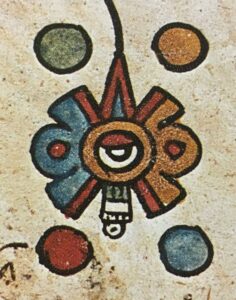
Affiliations
Sun Empire
The strongest of the affiliations in Ixalan. They are based mostly on Mexicas, but some Inca elements were used for their design as well.
Oltec
The civilization living in the core of Ixalan. Based on the name, I believe they are based on the Toltec culture. Mexicas believed the Toltecs were their intellectual and cultural predecessors, and considered their main city, Tula, to be the epitome of civilization, giving them a very mythological narrative.
Malamet
The jaguar cat folks, first seen in this set. They are based on the Mexica Jaguar Warriors, an elite military unit. They believed that dressing as jaguars would lend them the animal's strength during battles.
River Heralds
These are the Merfolk living in oceans, rivers, lakes, and rainforests of Ixalan. They are based on the Maya culture, which is most evident with their jade armor, especially its patterns. Jade was incredibly special for the Mayas, since it had a religious meaning and it was related to life and regeneration.
Legion of Dusk
The militia of Alta Torrezon, a highly religious Vampire monarchy. They are based on Spanish Conquistadores, and their lore is highly based on Christian symbolism and history.
Brazen Coalition
An independent society of Pirates. They don't seem to have any specific cultural reference like the other affiliated groups on Ixalan, being based primarily on the general depiction of pirates worldwide. It's important to highlight that Spanish colonies in America were readily familiar with piracy. In New Spain (Mexico), the city of Campeche was a favorite spot for pirates. The city's downtown area is still surrounded by protective walls originally used to protect it from pirate attacks.
The Gods of Ixalan
Chimil
The sun of Ixalan's core and mother of its Gods, worshiped by the Oltec and the Sun Empire. "Chimil" is a Kiliwa word that means "Throat", probably referring to the "breath of life" common in many cultures. It holds resemblance to the Inca sun god Inti, since both are described with three aspects or subcomplexes.
Ojer Taq
"Ojer" is a Maya word meaning "ancient". On Ixalan, the word is used to describe the children of Chimil, the original Gods of Ixalan. The name of these Gods are based on various K'iche words or expressions.
The white God of civilization, and the peoples' past, present, and future. "Taq" is a K'iche word used as a plural indicator. They are based on the "Circle of Life" or "Three Stages of Life" mask. The inner face represents birth, or childhood, the middle face represents adulthood, and the outer one represents death. This mask was found in Teotihuacan (of Mexica origin), the site of modern day Mexico City. Ojer Taq may be also based on Viracocha, the great creator deity in the Inca mythology who created civilization.
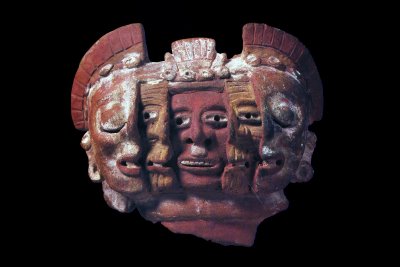
Ojer Pakpatiq
The blue God of time. His name comes from the K'iche word "pakpatik", which means "to disperse darkness". He's based on the great Feathered Serpent, Quetzalcoatl. This ancient god was venerated by several cultures during different time periods. He is related to wind, the planet Venus, the sun, merchants, arts, crafts, knowledge, learning, and priesthood. After the creation of the 5th sun, Quetzalcoatl descended to the Underworld, Mictlan, to gather the bones of the old humans. He then used his blood to give them life and create our current state of humanity. He also stole the cacao tree from the gods to give it to humans, believing that, being well fed, humans would only ever have to worry about improving in arts and science.
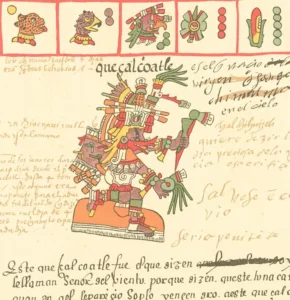
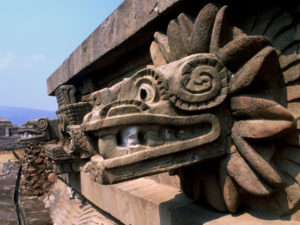
Ojer Axonil
The red God, associated with volcanoes and fire. His name comes from the phrase "ojer kaxonil ja", meaning "ruin". His flaming sword could be based on the most powerful living weapon in the Mexica pantheon, Xiuhcoatl the Flame Snake, used by the god of war, Huitzilopochtli. One of the references may also be Xiuhtecuhtli, the Mexica Lord of Fire and god of volcanoes. Another similar deity is Huehuetéotl, the God of Fire, also related with the snake sword Xiuhcoatl.
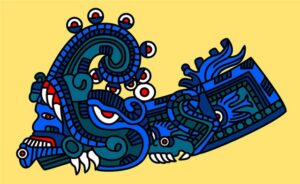
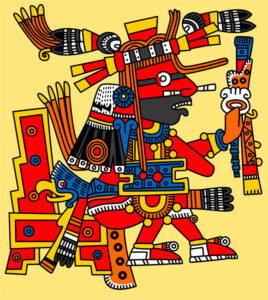

Ojer Kaslem
The green goddess of growth and cultivation. She is based on the Mexica goddess Coatlicue, known as "She who has the skirt of snakes", and "Mother of Deities". She is one of the most important deities in the Mexica pantheon, representing the fertility of the soil as well as the death that consumes all living things. Her name is based on the Cachiquel word "k'aslemal", meaning "life".
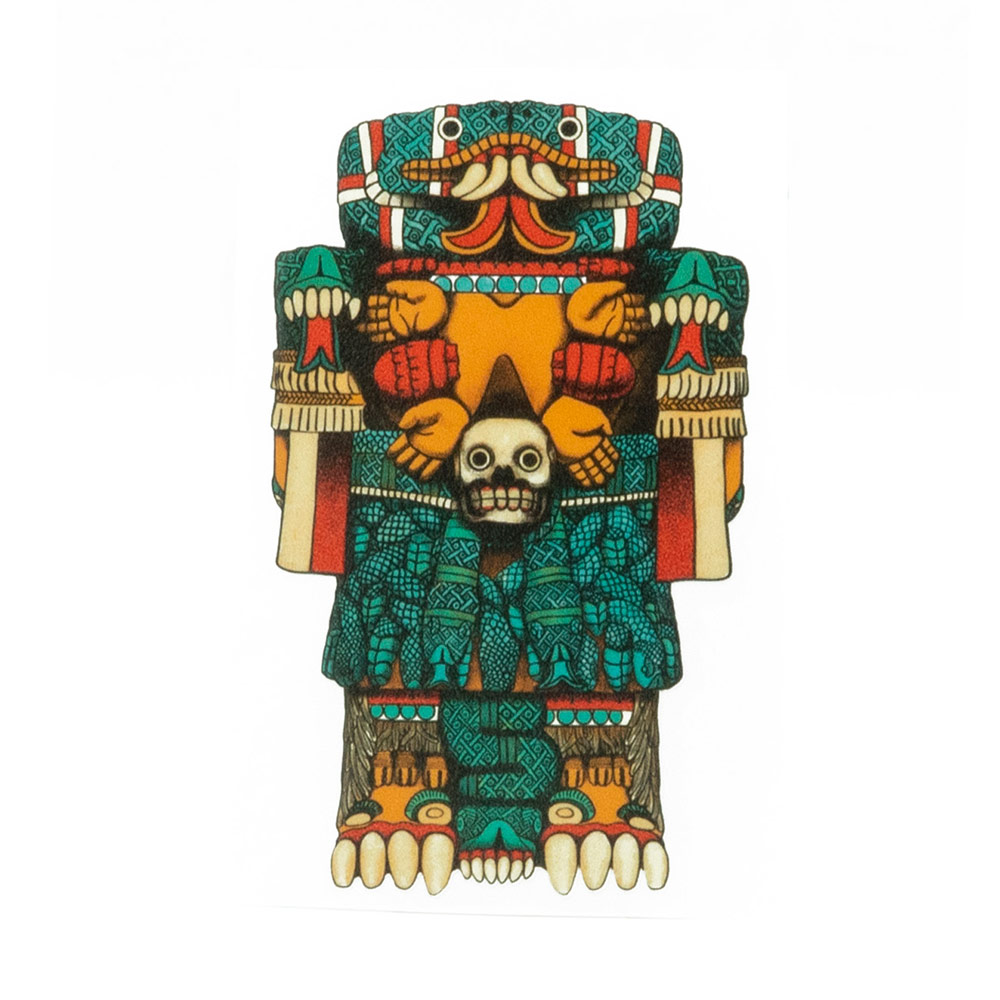
Aclazotz
The black Bat God, responsible for vampirism. He is based on the Maya god Camazotz (Kʼicheʼ words: kame, "death", and sotz', "bat"), a bat spirit at the service of the lords of the underworld. He appears in the Popol Vuh, a sacred narrative of the K'iche' people, as the enemy of the Hero Twins Hunahpú and Xbalanqué during one of their trials in the underworld, Xibalba. During this trial, Camazotz took Hunahpu's head off and brought it to a ballcourt to be used by the gods in their ballgame, known as ōllamalīztli.
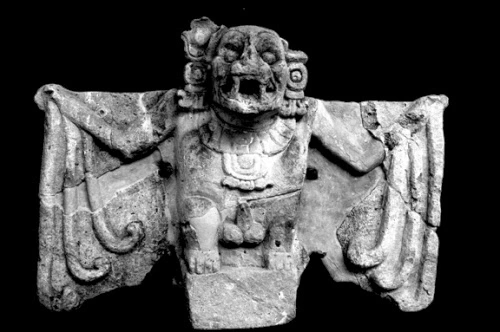
People and Deities of Ixalan
Hualti
Huatli is called "the warrior-poet", just as the tlatoani (ruler) of the city-state of Texcoco, Nezahualcóyotl. He was known for being a scholar, philosopher, and architect. He was not fully Mexica, but his mother was sister of the Mexica king of Tenochtitlan, so he was born heir to the throne. His father was killed by the Tepanecas in Texcoco when he was fifteen, so he escaped to Tenochtitlan, where he was raised as a Mexica. He led the war against the Tepanecas, defeating the kingdom of Azcapotzalco, and giving rise to the Triple Alliance between Texcoco, Tenochtitlan, and Tlacopan. His government established and enforced several laws against robbery, homicide, and other crimes. This new government also helped to create a better division of power between different councils, and highly promoted art, culture, and architecture.

Ahau
"Ahau" or "Ajau" is a political title given to the Maya nobility and priests of the Maya city-states. The term has been interpreted as "ruler" or "king". It doesn't refer to a single individual, but rather the whole ruling class or family.
Akal Pakal
Kʼinich Janaab Pakal I, known as Pakal the Great, was the ruler of the Maya city-state of Palenque, who ruled for about 68 years. He was responsible for the most notable surviving inscriptions and architecture, making Palenque one of the most prosperous cities in the region of the current state of Chiapas. He was buried in a carved stone sarcophagus within the largest stepped pyramid in Palenque, wearing a jade mask and bead necklaces. Notably, Yuri Knórozov, decipher of the Maya script, believed Pakal was a military title, not a name.

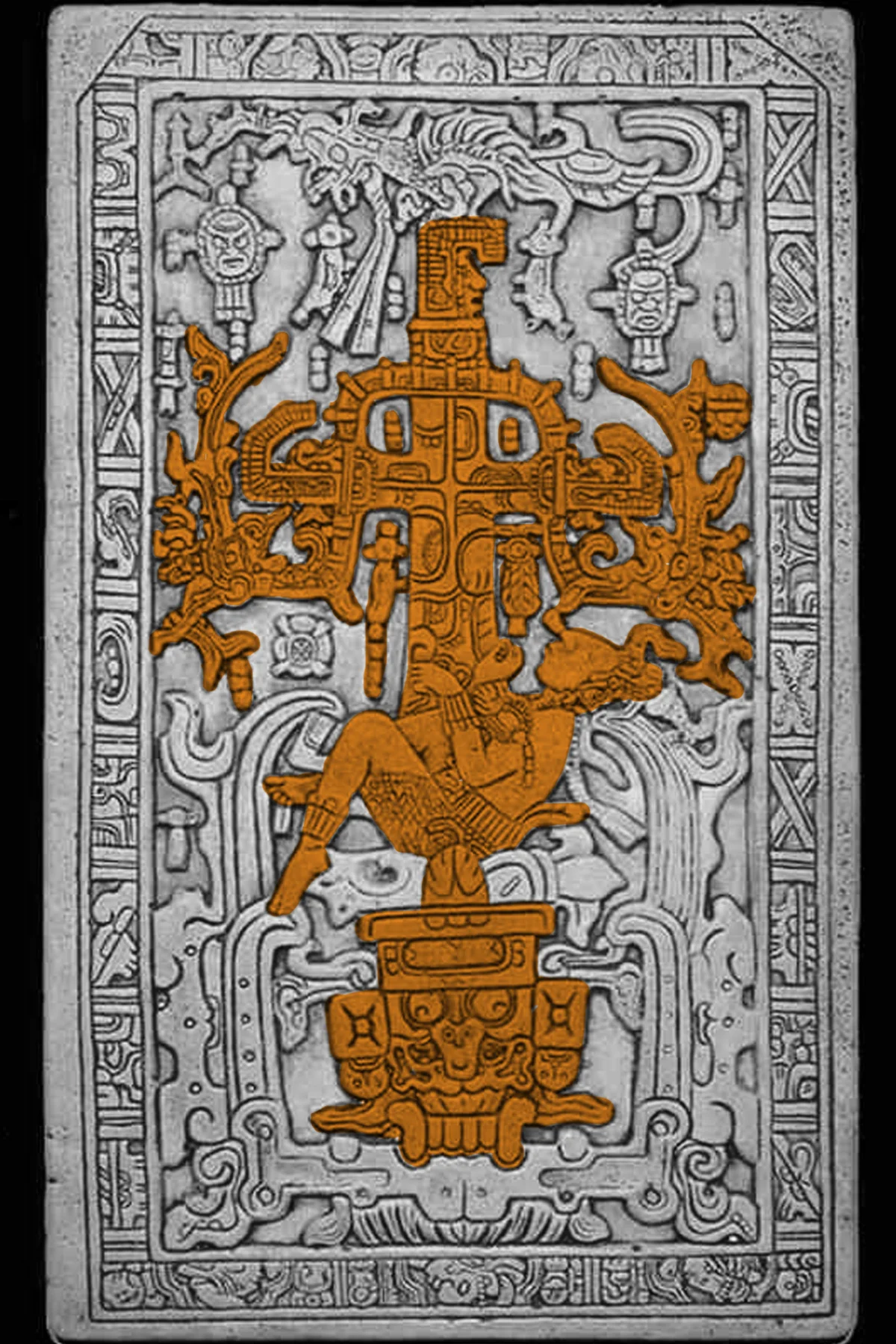
Inti
Inti is the name of the Inca sun god, more appropriately seen as a cluster of solar aspects: Apu Inti, "The Lord Sun", representing the father; Churi Inti, "Daylight", representing the son; Inti Wawqi, "Sun Brother", representing the brother. It is believed this division of aspects involves the duties that Inti provided, the father being the actual star in the sky, the son being the daytime light, and the brother having the power to grow things for agriculture.

Akawalli
"Akawalli" is a Nahua word meaning "weed". Or, in the card's case, fungus.
Nicancil
"Nicancil" is a Maya name used for girls meaning "to flourish. This is best represented in the card's ability to put lands onto the battlefield for "flourishing" ramp strategies.
Tecún Umán
The Jadelight Spelunker
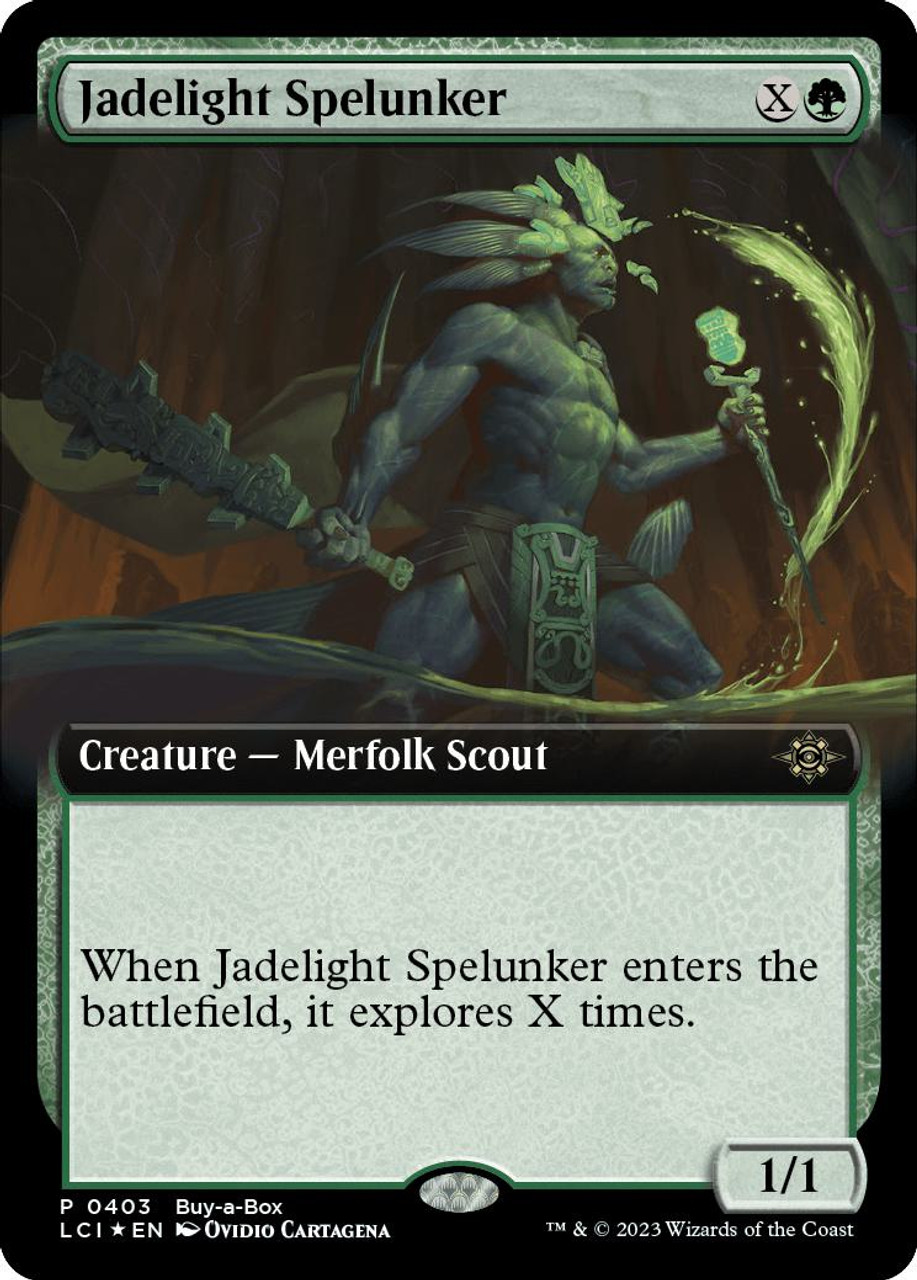
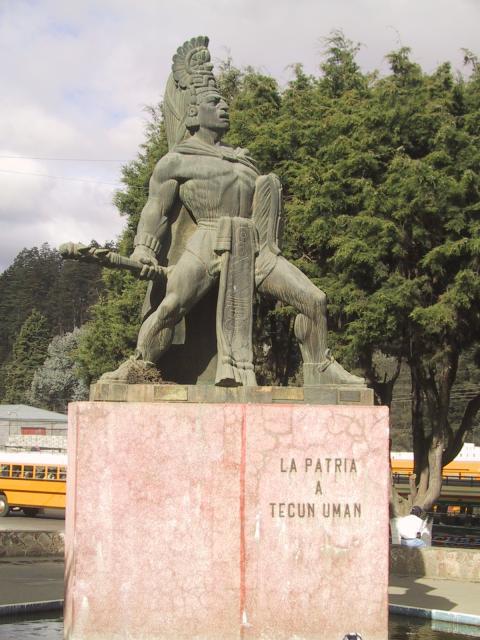
Architecture and Language
Pyramids
Pyramids are an important part of Mesoamerican architecture, used for rituals, burials, and to tell stories with their many decorations. Unlike Egyptian pyramids, these have flat tops, usually used as a temple, and a succession of stairs that reach the upper part of the structure. Some of them were aligned with the stars and were built on sacred places. They were considered a connection between earth, the sky, and the underworld.

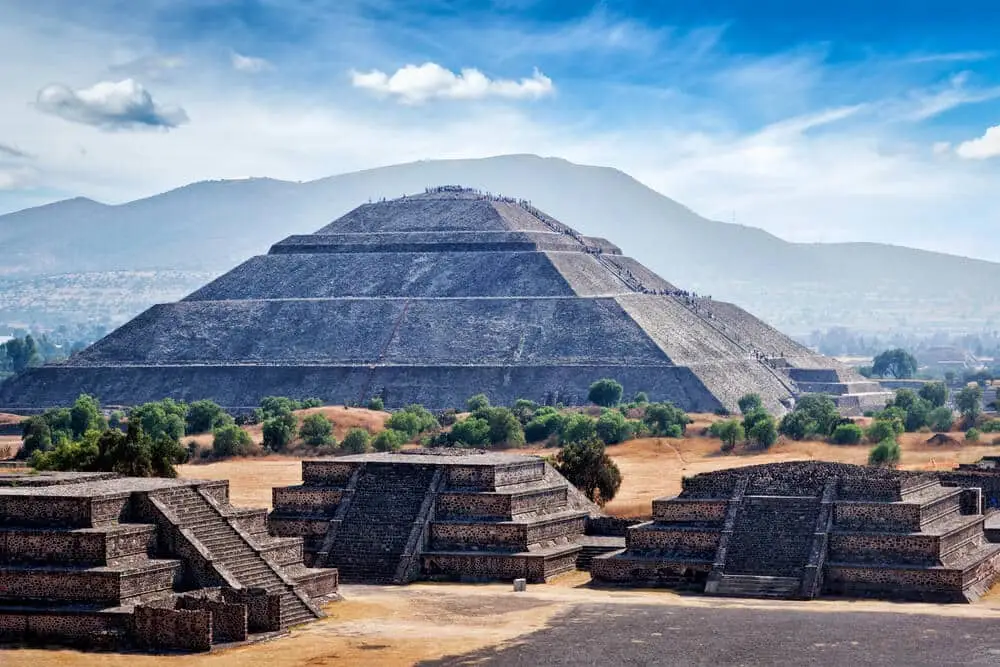
Colossal Heads of the Olmecs
Olmecs ("rubber people" in Nahuatl) are the first Mesoamerican civilization. They are famous for their colossal heads, which are basalt monuments believed to be depictions of rulers portrayed as ballplayers. The existence of 17 of these heads have been confirmed to date, all of them in the Mexican states of Veracruz and Tabasco. The smallest ones weigh 6 tons, but in general they are about 20-50 tons and 2.7 m (8.8 ft) tall. The Olmecs are known as the "mother culture", since it is believed they invented the first Mesoamerican calendar, popcorn, ballgame, an ancient version of the compass, and probably the first Mesoamerican deities. They were also skilled in the sculpting of jade.
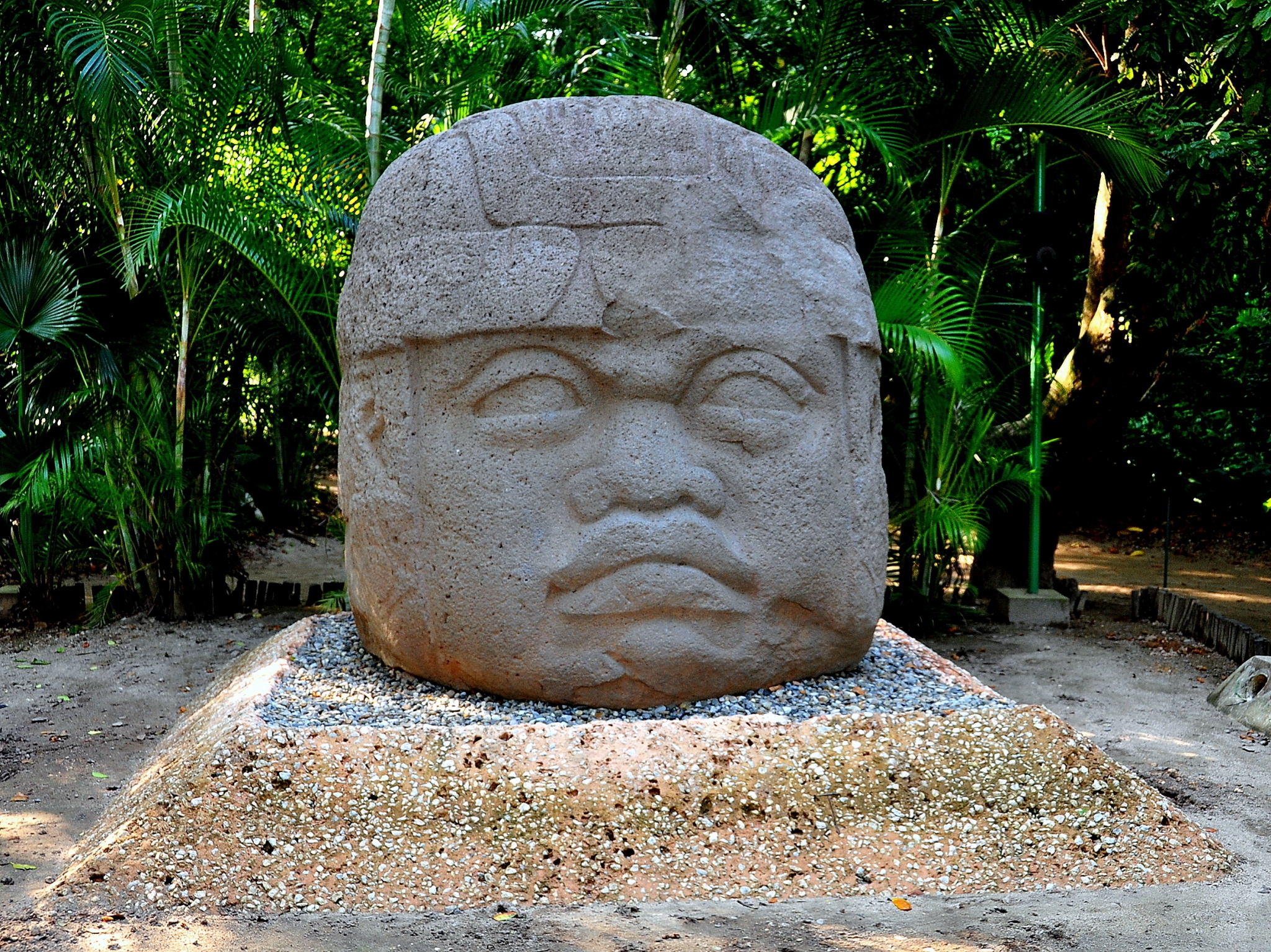
Stelas
One of the most important records of Maya glyphs are the stelas, vertical monuments made out of limestone, mainly depicting political events, like main achievements of a governor, wars, or birthdays. They were mostly used to glorify the king and to keep record of his deeds. The first versions of stelas depict mythological events. It was thanks to these rediscovered stelas that it was possible to decipher the Maya script.
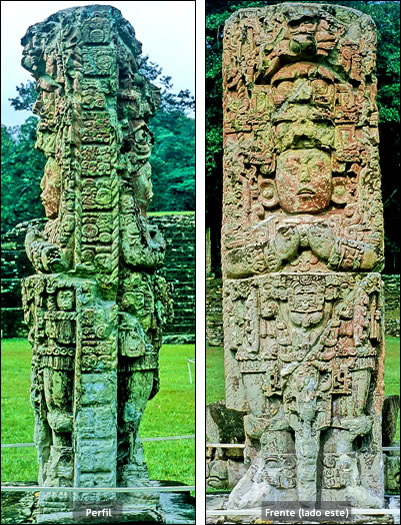
Murals
Just like stelas, murals were used to depict the life and achievements of the Maya ruling class, as well as other traditions of the community. Thanks to these murals, we have a better understanding of how ancient Mayas dressed and behaved. They used different plants and minerals to create their colors, and they were so skilled at it that experts have identified 28 combinations of colors in the Bonampak murals, the best preserved to date. These murals describe the story of the last ruling family in Bonampak and depict celebration scenes, rituals, and the coronation of the king.
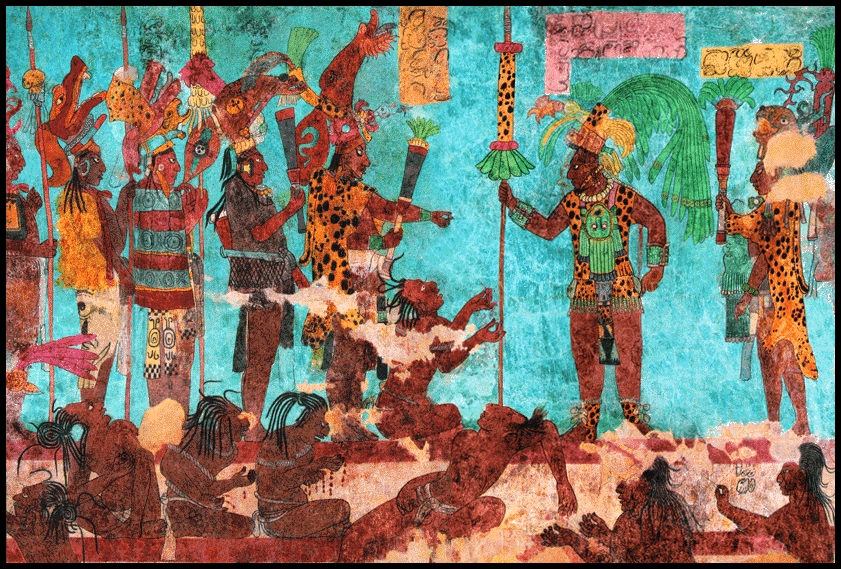
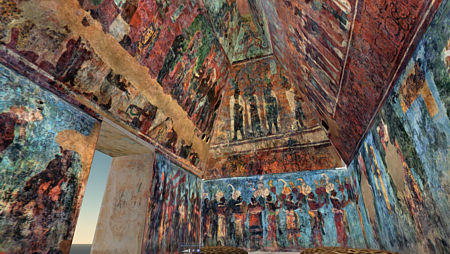
Maya Language and Script
The Maya script, also know as glyphs, is the writing system of the ancient Maya. They used logograms (written character that represents a word) and syllabic glyphs, which were painted on ceramics, walls, and paper codices, craved in wood or stone, and molded in stucco. Yuri Knorozov, the founder of the Soviet school of Maya studies, is known as the father of the decipherment of the Maya script, due to his identification of the syllabic signs.

Nazca Lines
The Nazca Lines are a group of geoglyphs craved on the soil of the Nazca Desert, in southern Peru. Some lines run across the landscape, while others depict animals and plants, made from one continuous line. Experts don't agree on their exact purpose(s), but it's believed they have religious significance. The one depicted in Restless Vents

Machu Picchu
Machu Picchu is an Inca citadel located on a 2,430-meter (7,970 ft) mountain ridge, South Peru, 80 kilometers (50 mi) northwest of Cusco. Since the Inca had no written language, there is no written record of the site while it was in use. The names of the buildings, their uses, and their inhabitants are inferred by archeologists and are based on physical evidence.
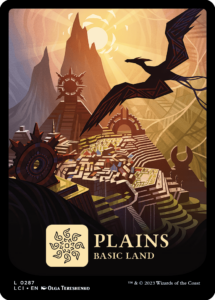

Astronomical Observatories
The Maya were amazing astronomers. They developed the most accurate pre-telescope astronomy in the world. Their estimate of the length of the synodic month was very accurate, and their calculation of the solar year was more accurate than that of the Spanish. They believed the will of gods could be interpreted by the movements of the stars and planets, so they built observatories to track them. They were aware of solstices and equinoxes, and they tracked the movements of Mercury, Venus, and the sun and moon. One of the most famous Maya observatories is "El Caracol" in Chichen Itzá.
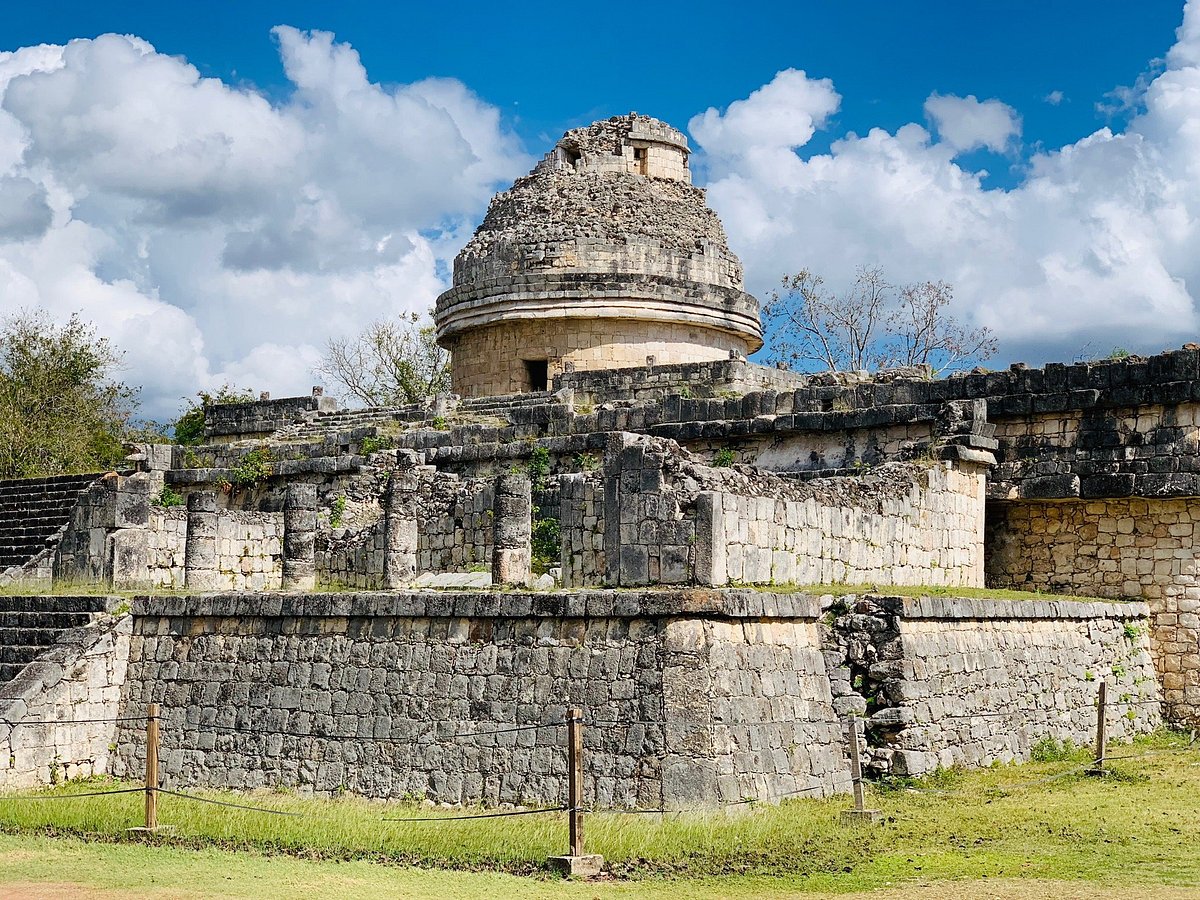
Objects
Maya Calendar
The Maya calendar is a system based on rings representing cycles of different length. The 260-day count is known as Tzolk'in. The Haab' was made up of eighteen months of twenty days each plus a period of five days at the end of the year known as Wayeb', which were believed to be dangerous times because portals between the mortal realm and the underworld dissolved, allowing diseases and misfortune to occur. A Calendar Round happens after 52 Haabʼ years, or 18,980 days, which is when a date gives both Tzolk'in and Haab'. To specify dates over periods longer than 52 Haab' years Mayas used the Long Count calendar, which uses a base-20 scheme. A recent misinterpretation of this Long Count calendar led to the belief that the world would end in 2012.
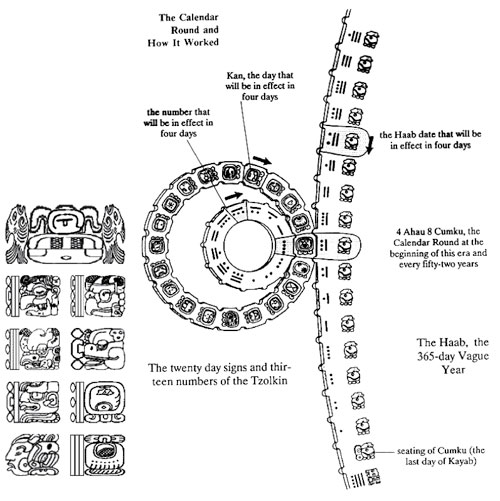
Quipu
Braided Net

Death Masks
Spirits in Ixalan, called Echoes, are wearing Death Masks, which were used by Mesoamerican cultures since the Olmecs. They believed these masks would protect the deceased on their way to the afterlife. Maya death masks, which look like the perfect reference for the Echoes masks, were mostly made of jade, which was the symbol of life, fertility and rebirth.

Jade and Amber
Jade and amber where used by Mesoamericans in ornaments. Jade was very valuable for Mayas: it was associated with eternity, life, and immortality, and people believed it could cure illnesses. Something similar happened with amber, which was also considered to be a link between the mortal and the spirit world.

Aztec Calendar
The "Sun Stone", commonly known as the "Aztec Calendar", was used as a constant element in the design of this set, but it's more obvious in the Map token and Compass Gnome
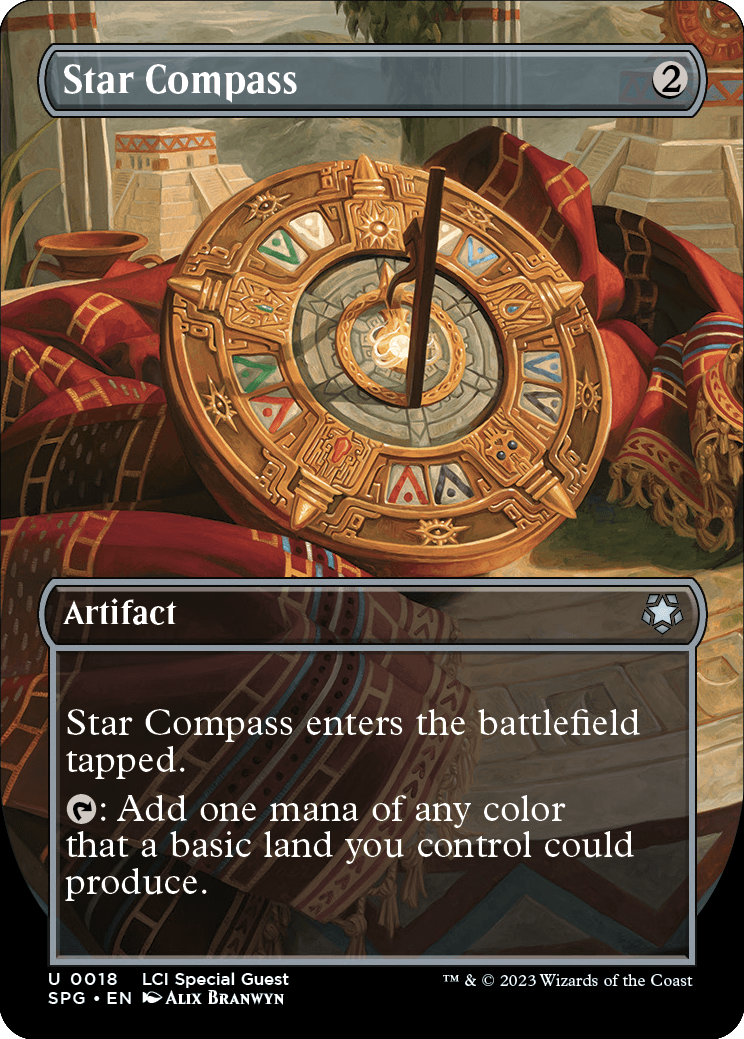
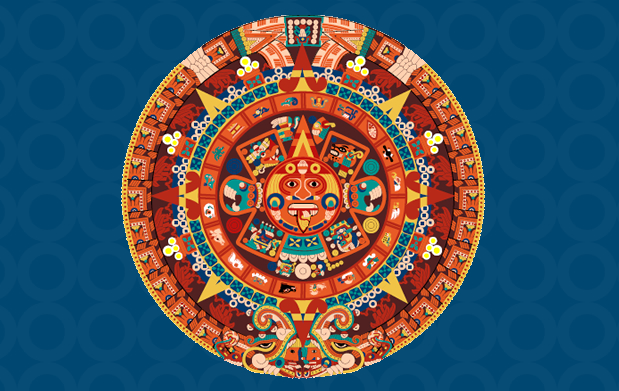
Mesoamerican Ballgame
The Ballgame depicted in Contested Game Ball
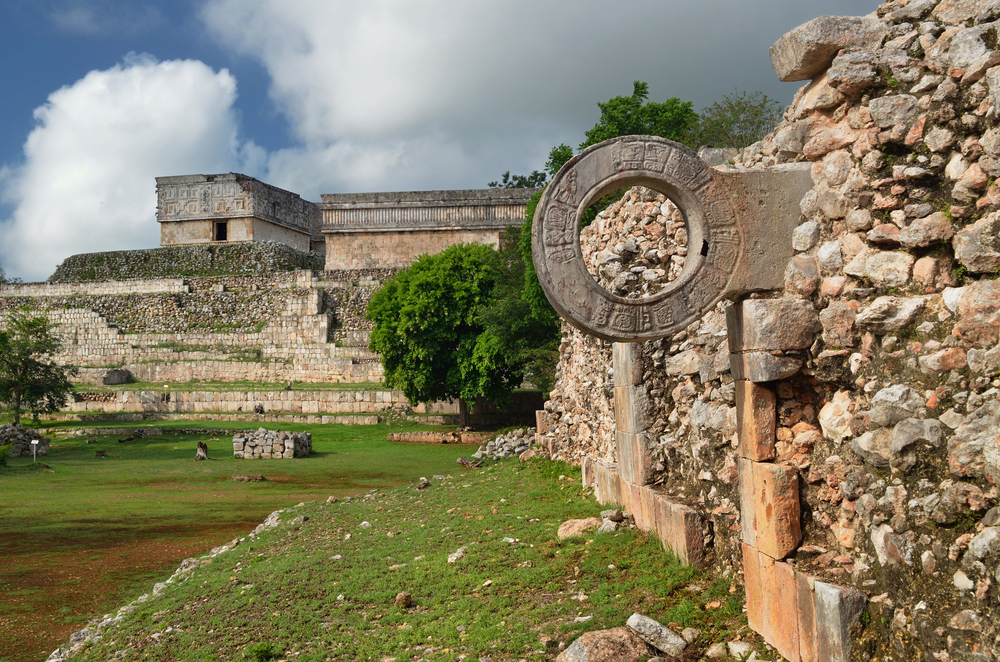
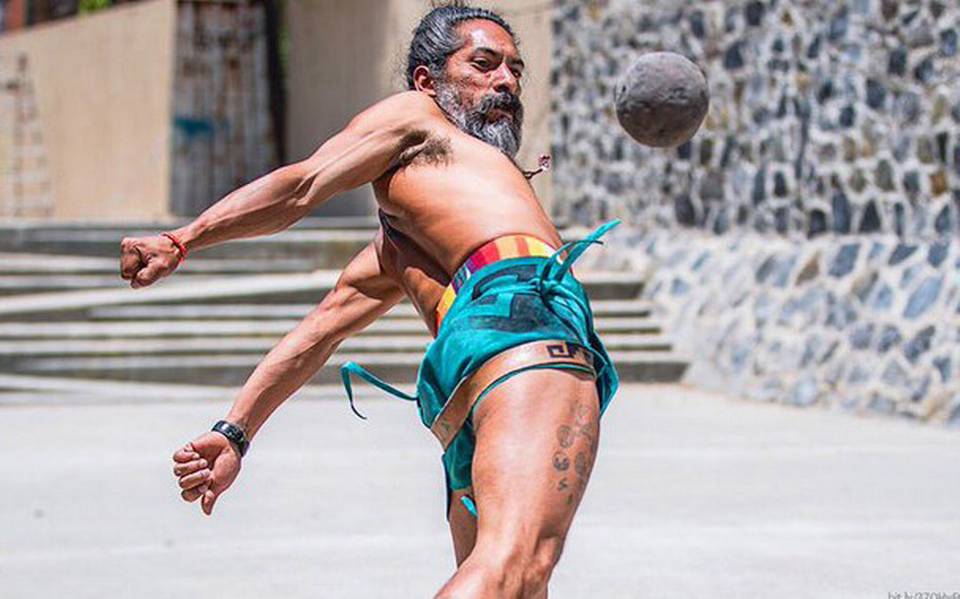
Crystal Skulls
Visage of Dread

Macuahuitl
Idol of the Deep King
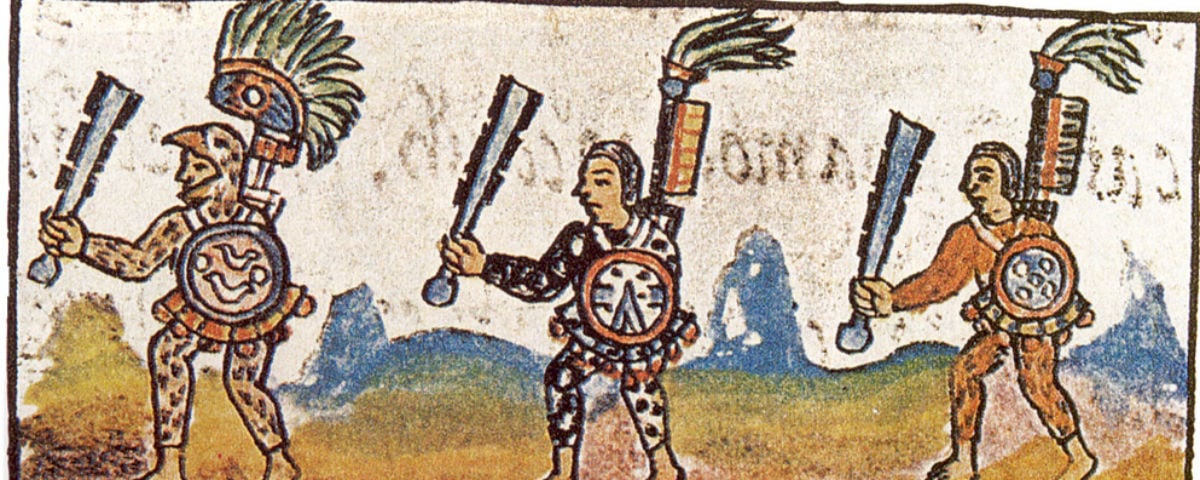
Moctezuma's Headdress
Paleontologist's Pick-Axe
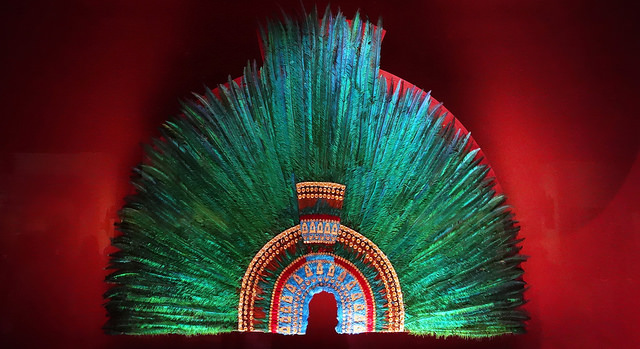
Nature
Cenotes
A cenote is a sinkhole resulting from the collapse of limestone bedrock that exposes groundwater. They're very common in the Yucatan peninsula. For ancient Mayas, cenotes were considered life sources, and the entrance to the underworld, Xibalba. They were also used for sacrificial offerings because of their spiritual connection to the gods.
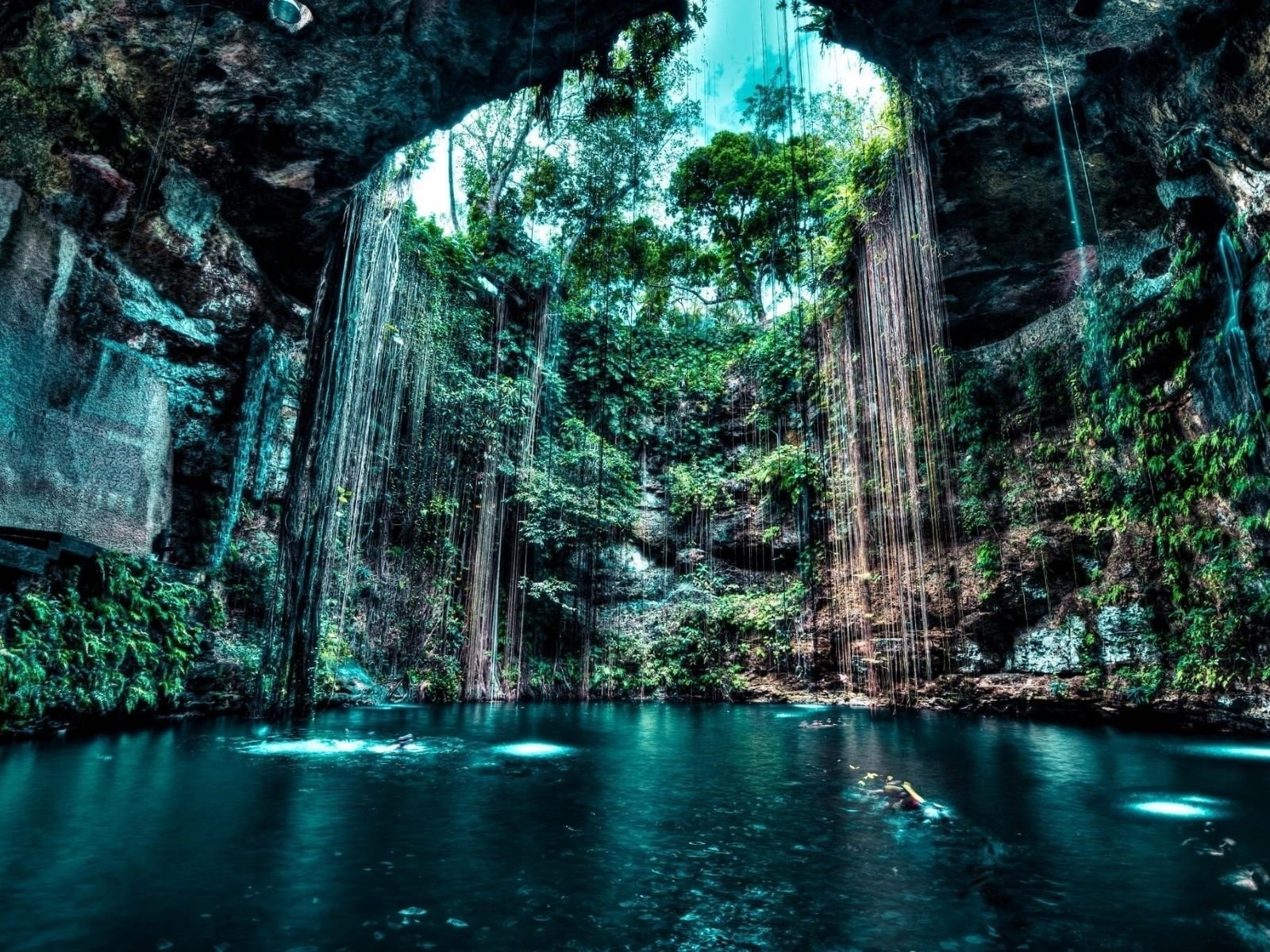
The City of Tecutlan
Tecutlan is a real place, but it has nothing to do with a rift. It's a small town in Oaxaca.

Culture
Elderly Persons
In Mesoamerican communities the elderly where highly venerated because of their wisdom and years of life experience. These individuals were in charge of passing earlier knowledge among the newer generations. For current Latinos, ancestors are so important that the deceased ones are celebrated each year during Día de Los Muertos, the Day of the Dead.

The Family
The family concept is very important for Latino communities nowadays, being considered the strongest support an individual can get. Unity is strongly promoted, even when some members of the family live far away from each other.
Markets and Bazaars
Traditional open-air markets are known as "Tianguis" (náhuatl "tiankistli"), and they have existed since pre-Hispanic times. The biggest and most important one for the Mexicas took place in Tlatelolco, near to the Templo Mayor of the main city, Tenochtitlan. In there, merchants sold slaves, minerals, jewels, clothing, pelts, salt, corn, herbs, animals, ceramic, furniture, and food, among other things, using barter or cacao seeds as currency. The tianguis had their own legislative system, with leaders and judges taking care of fair commerce and security. Tianguis also served as places for public gathering, where you could listen to the latest news and gossip, reunite with friends, or find a life partner for your son or daughters.
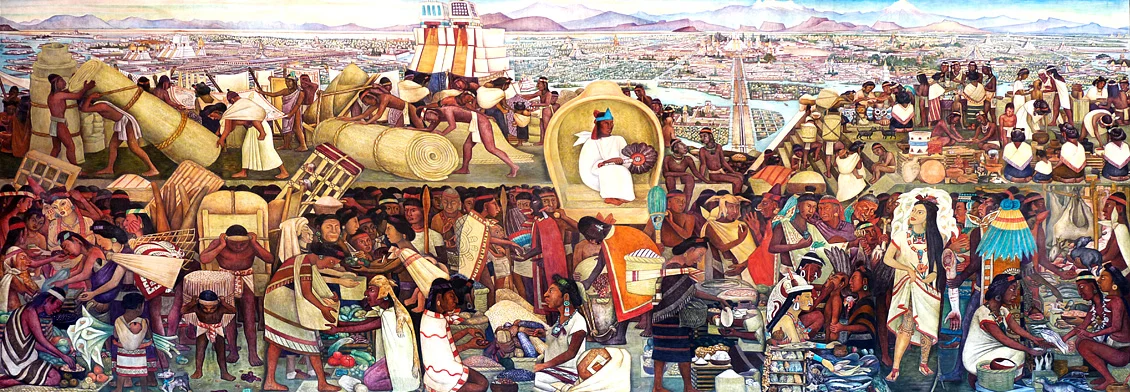
Catholicism
Vampires
As we said before, Vampires in Ixalan are based on Spanish Conquistadores. Catholicism has been the official religion of Spain since the fifteenth century, so it's no surprise that these Vampires are fanatics with practices, relics, and even art based on that religion.
Self-Flagellation
Bloodthorn Flail
Canonization of Saints
In the Roman Catholic Church, to canonize means to officially declare a person to be a saint. Vito Quijano de Pasamonte, a character we met in the first Ixalan block and the one responsible for freeing Aclazotz, is blessed by his God by being "canonized", as depicted on the card Canonized in Blood
Martyrs and Relics of the Saints
The physical bodies of martyrs were typically displayed in Catholic churches since they were linked to sacrifice and love of God. Eventually it became common practice to fragment the saint's bodies and distribute them among different churches to be displayed to encourage monetary donations and church attendance. Dusk Rose Reliquary shows a heart kept in a glass box, which is similar to Christian relics, and we even have a Martyr of Dusk and Tarrian mentioned as a martyr in Tarrian's Journal. In the Santa Mónica convent, in the Mexican city of Puebla, the church keeps the heart of bishop Manuel Fernández de Santa Cruz (shown in the picture below). He was not a saint, nor a martyr, but he left in his will that his wish was to have his heart removed so the nuns could keep it. This is just an example that keeping hearts on display is not as uncommon as one may think.
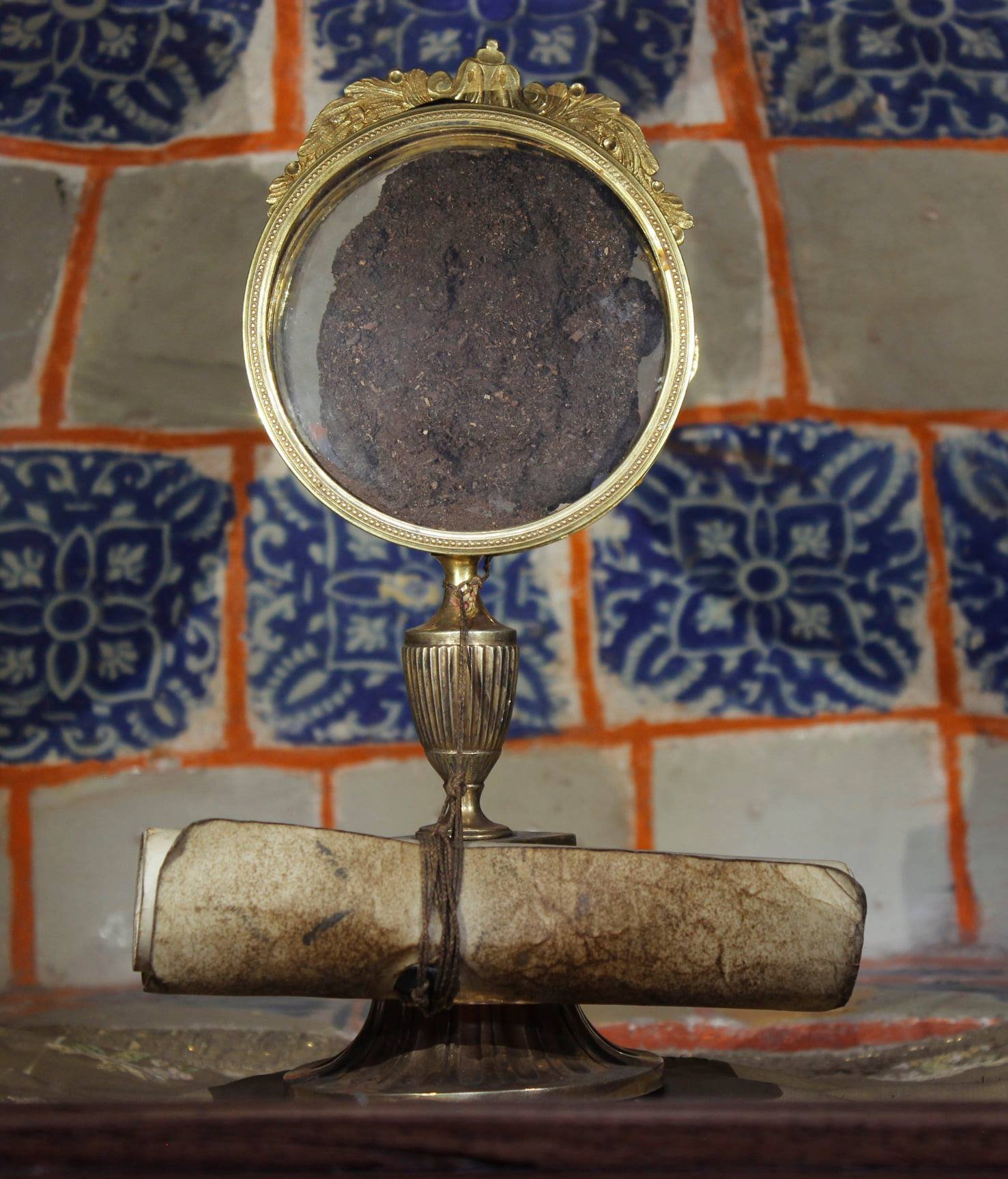
Art and Statuary
Related to Catholic art, we have similarities between the art shown in Bartolomé del Presidio and the "Madonna della Pietà" by Michelangelo Buonarroti, which is displayed in Saint Peter's Basilica in Vatican City, and represents Mary with Jesus in her arms.
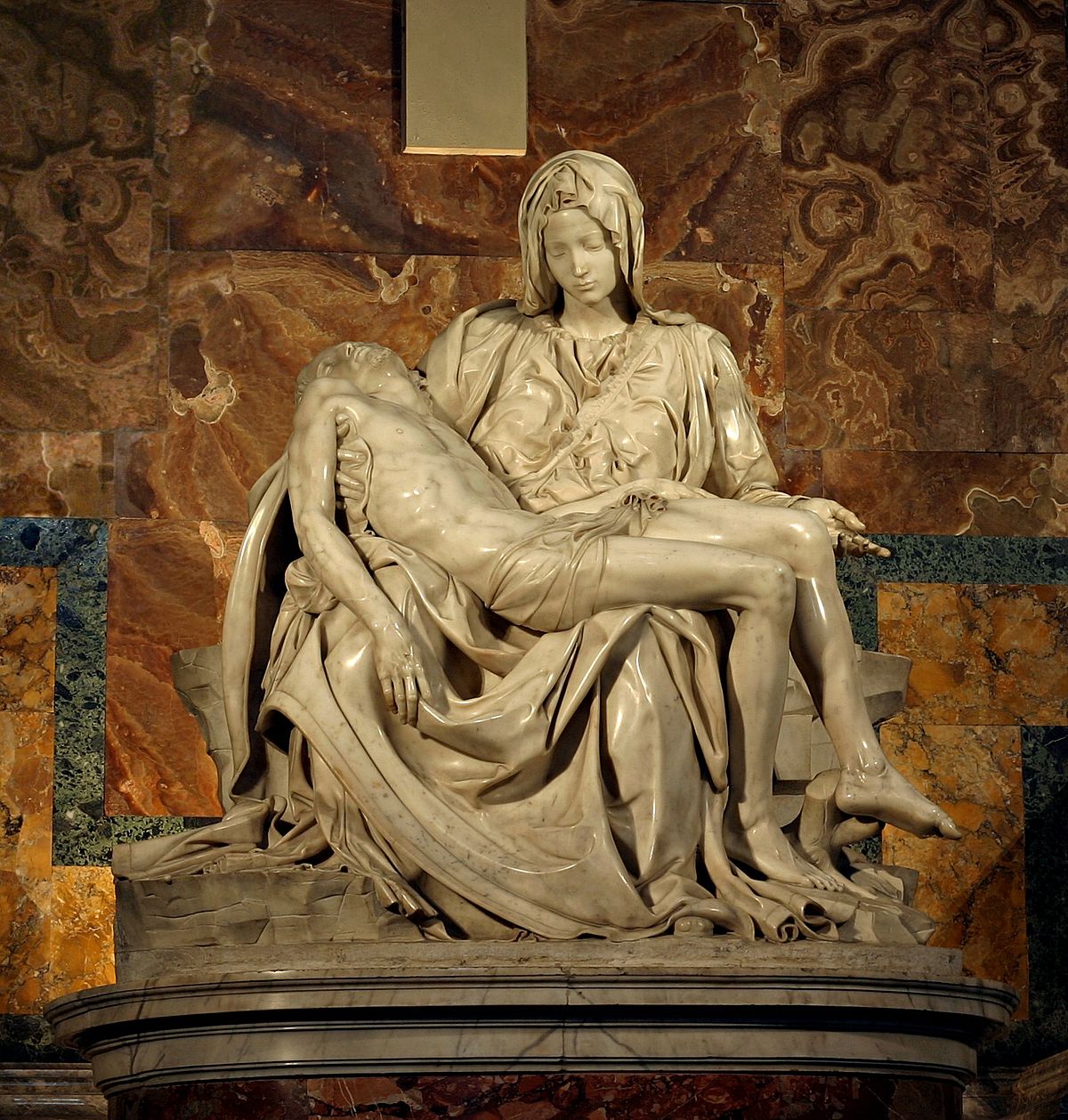
In Huatli's Final Strike we see a resemblance to one of the most famous depictions in Christianity: Archangel Saint Michael defeating the devil.
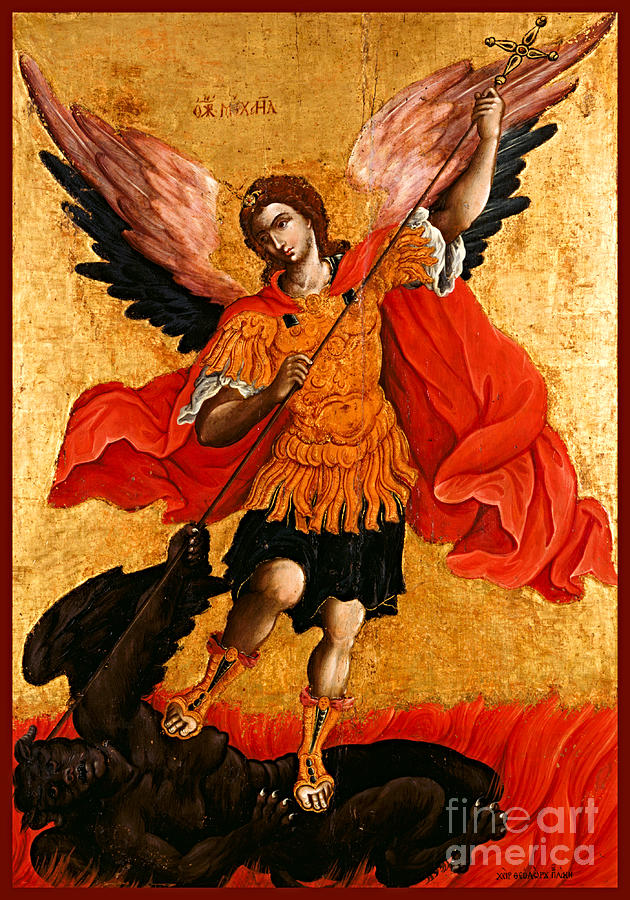
Animals
Opossum
Many animals from Mexico, Central America, and South America are depicted in The Lost Caverns of Ixalan cards. My favorite is the little tlacuache (Mexican name of the opossum) hidden in the left corner of Bonehoard Dracosaur. The tlacuache is the Mexican Prometheus. According to a Mexica legend, an opossum stole the fire from the gods and gave it to humans. Since it used its tail to carry the fire to us, it now has no fur on it.

Quetzal
The Quetzal was a sacred bird for Mayas and Aztecs, and it's the national bird of Guatemala. Their regal, colorful feathers were used to decorate the clothing and headdresses of kings and priests. The Angels of Ixalan have wings that closely resemble those of the quetzal.
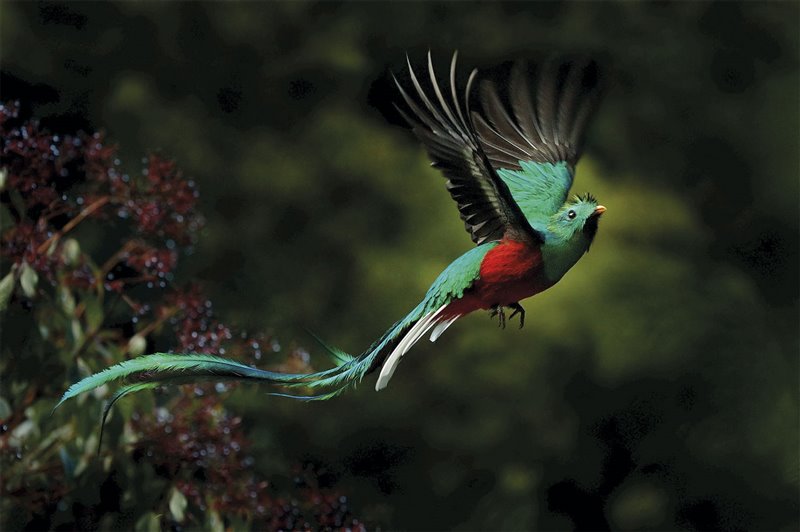
Chupacabras
The Chupacabras (yes, that's the original name in Spanish) is a cryptid from Latin America, but it has been reported to have appeared in the United States, the Philippines, and Russia. Their name comes from the belief that it attacks and drinks the blood of animals, particularly goats (cabras). It was originally described as a reptilian creature with spines, but it later evolved to look similar to a hairless dog. People probably were just seeing dogs afflicted with mange and believed they had seen a wicked monster.
Coati
Coatis are diurnal omnivore mammals that are related to racoons, native to the Southern United States, Mexico, Central America, and South America. The ring-tailed coati is only found in the tropical parts of South America.

Xoloitzcuintli
The Xoloitzcuintli is a hairless dog native to Mexico. They were considered by Mexicas to be the guardians of souls and guides to the underworld, Mictlan. If the person mistreated animals during their mortal life, the dog wouldn't help them cross the river of death. It is also one of the transformations of the god Xolotl, Quetzalcoatl's twin.
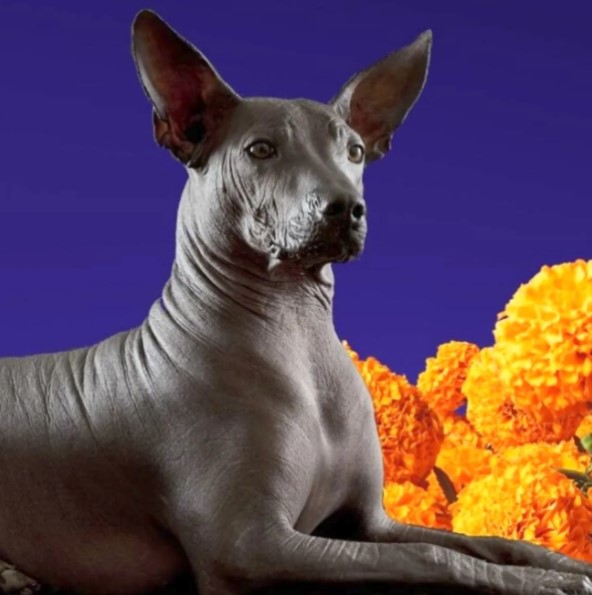
Axolotl
Ambystoma mexicanum, better known as the Axolotl, is an endemic Mexican salamander that doesn't experience metamorphosis as it grows. It is unfortunately an endangered species due to the destruction and pollution of their native habitat. In the wild they are brown, but captive breeding gave us their more famous pink and white colors. They can regenerate their limbs and parts of their eyes and brain, so they are valuable to scientific research. It's also one of the transformations of Xolotl, Quetzalcoatl's twin. "Xolo" means ugly, deformed, or monster in Nahuatl, so axolotl means "water monster". However, Xolatoyac is anything but a monster!
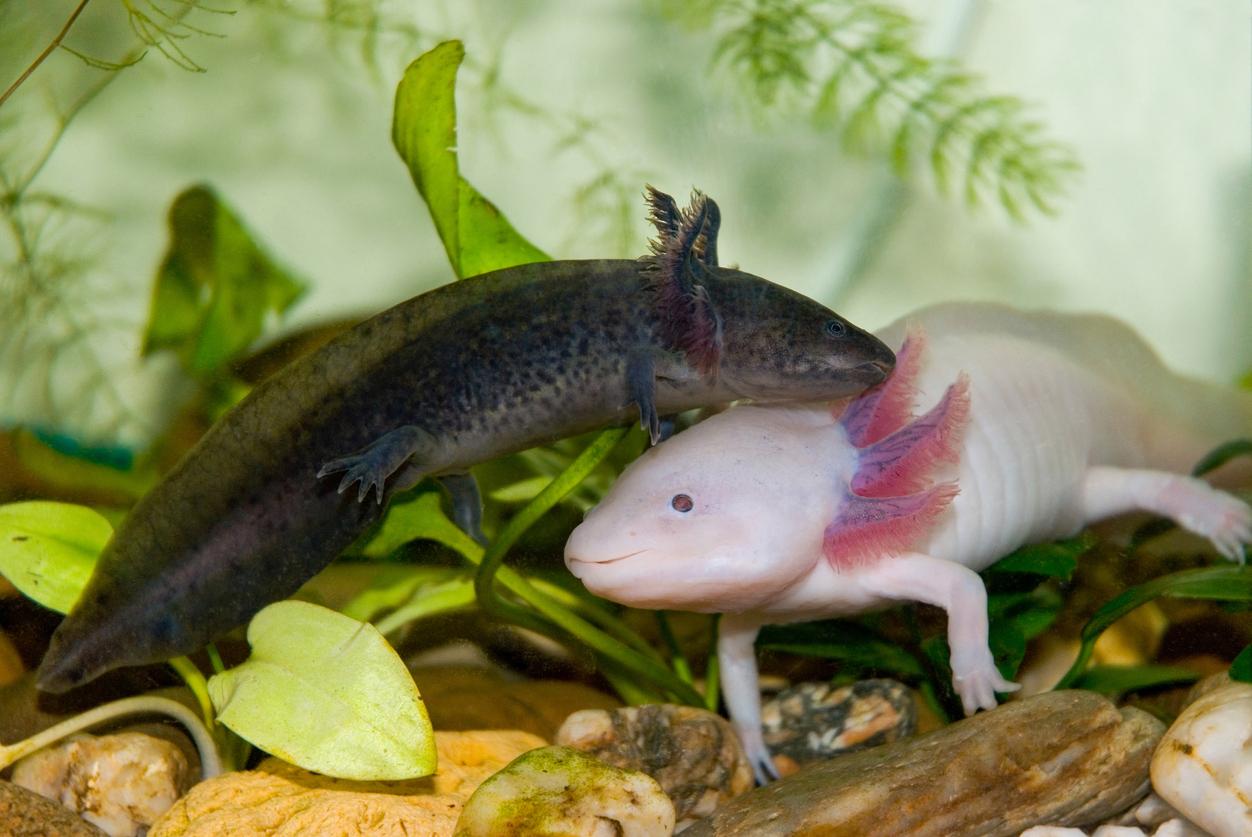
Scarlet Macaw
The Scarlet Macaw is a parrot native to humid evergreen forests in America. It is an endangered species because of the destruction of their habitat and their illegal capture for the pet parrot trade. It is the national bird of Honduras.
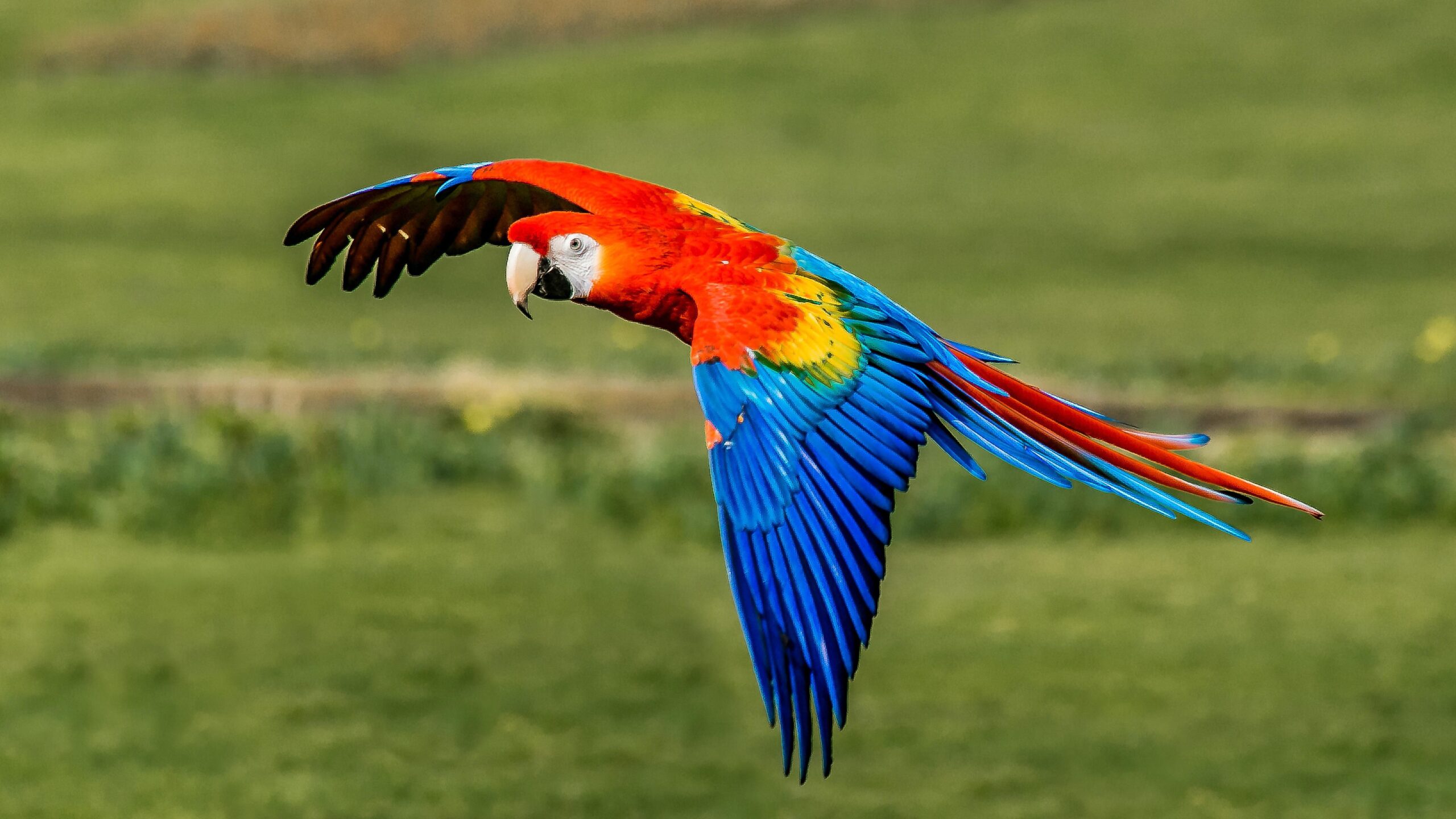
Capybara
The Capybara is the largest living rodent on Earth, and it's native to South America. It's related to guinea pigs and chinchillas. They are herbivores and semiaquatic, known for being very passive.
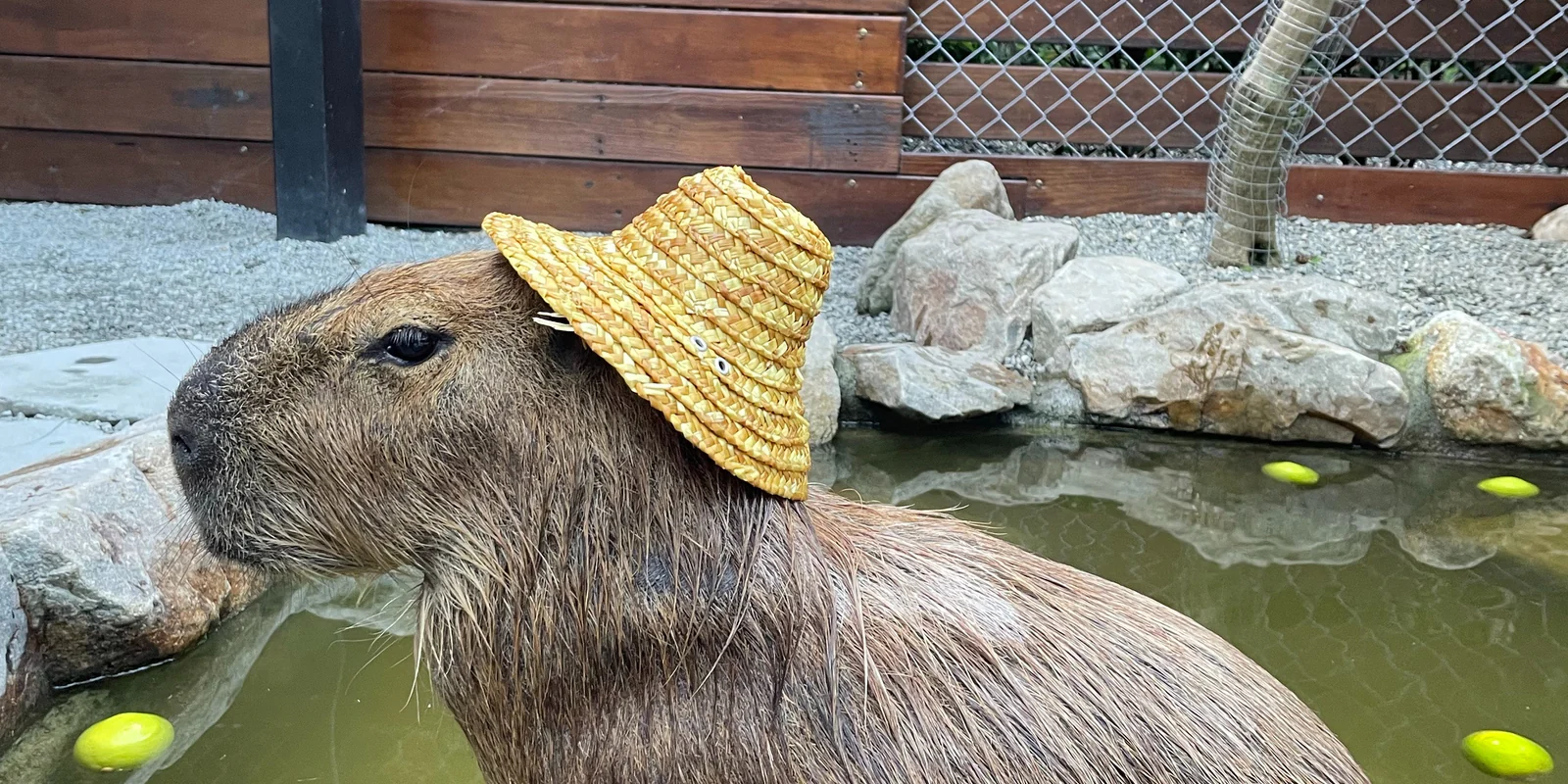
Llamas
Llamas are a domesticated kind of camelid, used as meat and pack animals by Andean cultures for centuries, along with alpacas, guanacos, and vicuñas. In the Inca empire they were a symbol of royal significance, and llama figures were often buried with the dead.

Rediscovering the Lost Caverns of Ixalan
Ixalan worldbuilding was clearly so complex and extensive that these are not all of the references used in the set, they are just the ones I've personally identified so far. However, I hope this article sparked your curiosity about Mesoamerican and Inca civilizations so you can enjoy The Lost Caverns of Ixalan in a new and exciting way.
Special thanks to Tio Pablo, Manliotzilla, mk_doronco and loganadixon1 for helping with many of the references shown here.